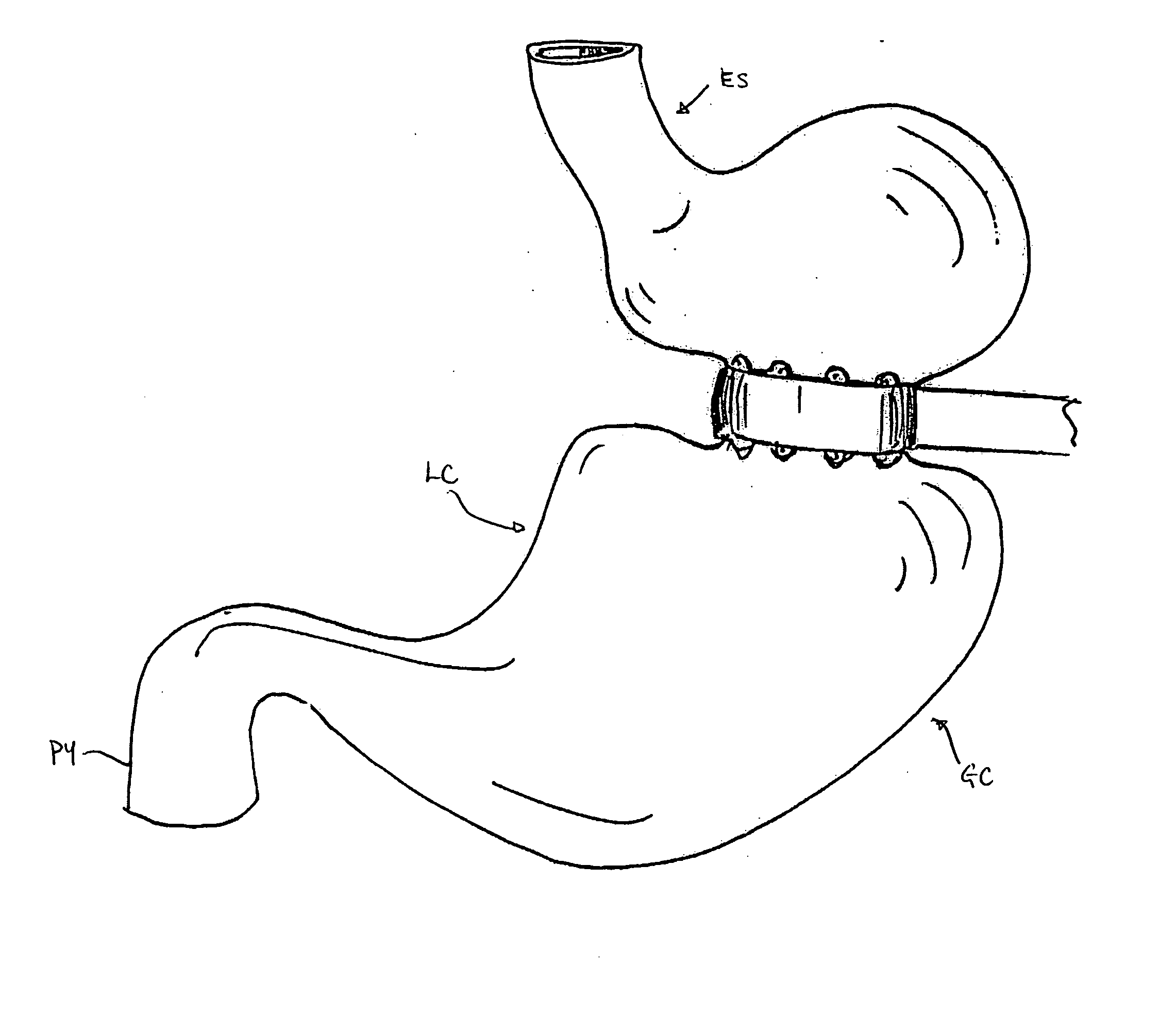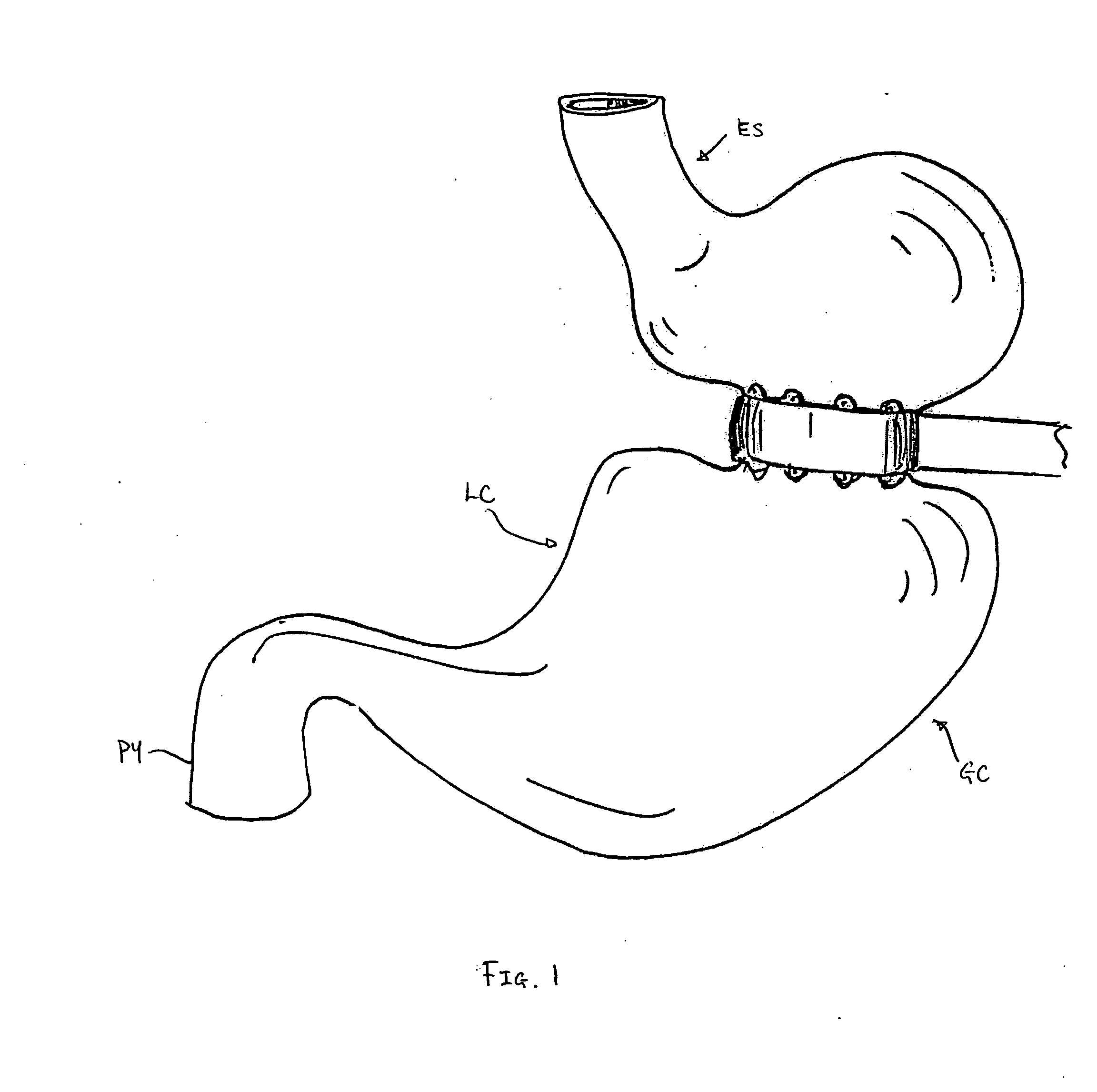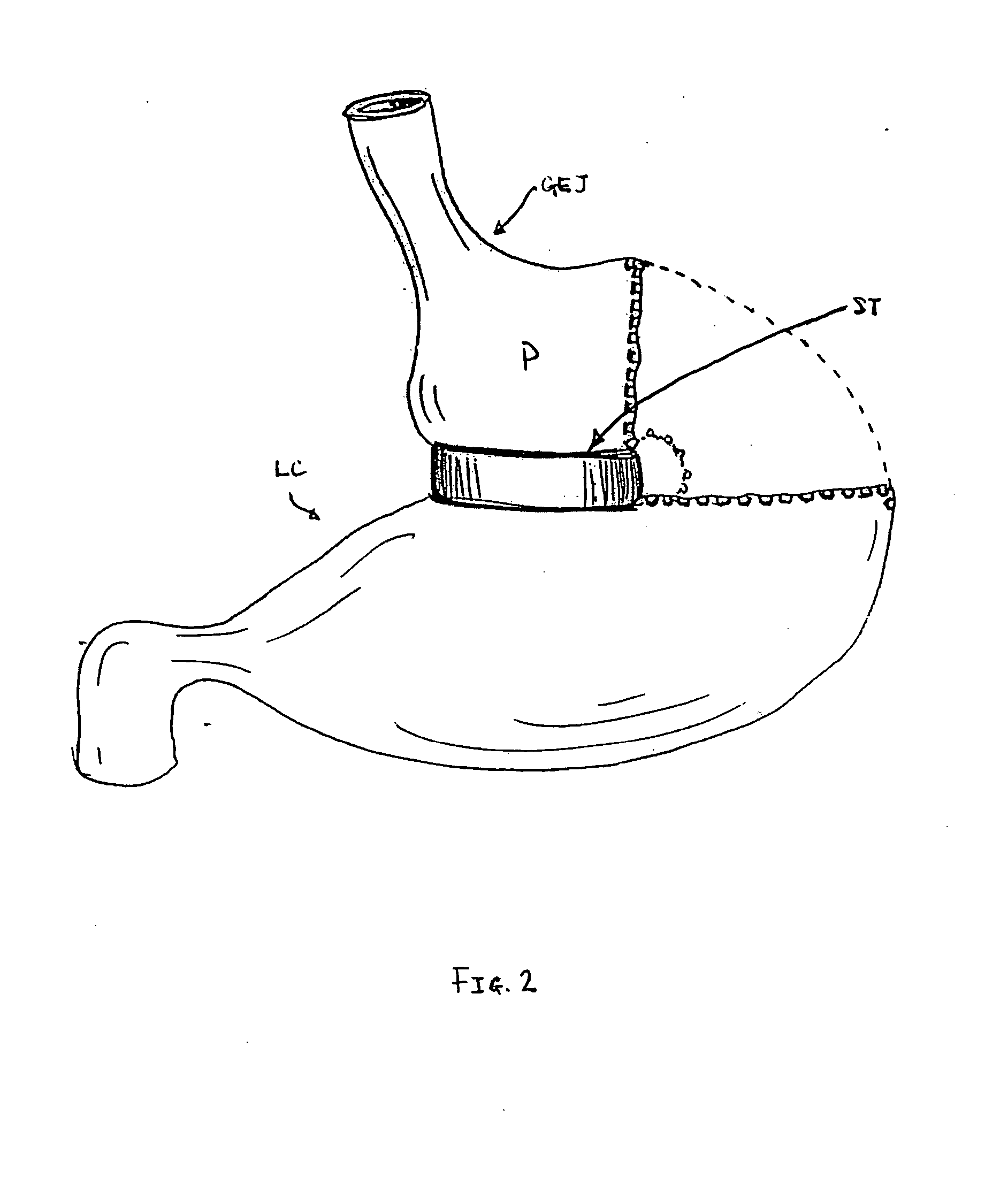Method and device for use in endoscopic organ procedures
a technology for endoscopic organs and methods, applied in the field of medical equipment and methods, can solve the problems of leaving patients who are considered obese or moderately obese with few, if any, interventional options, and achieve the effect of minimizing the risk of infection
- Summary
- Abstract
- Description
- Claims
- Application Information
AI Technical Summary
Benefits of technology
Problems solved by technology
Method used
Image
Examples
Embodiment Construction
[0027] The present invention provides, in part, for methods and devices for hollow organ division and restriction, more particularly providing methods and devices to perform a transoral, endoscopically mediated stomach reduction for purposes of, e.g., treating obesity.
[0028] As previously discussed, the results of some clinical procedures of the prior art are shown in FIGS. 1-3, from a perspective external to the stomach. An example of a result of the procedure in one variation of the present invention is shown in FIG. 4A, which depicts an external anterior view of a stomach organ 100, having an esophagus 101 (cut away to reveal the esophageal lumen 102), and further depicting a circumferential orifice or stoma 103, configured from staple line 104, producing a pouch (P). Orifice 103 is preferably positioned close to and on the distal side of the gastroesophageal junction (GEJ) at the base of the esophagus, and angled toward the lesser curve of the stomach (LC), leaving a stoma or o...
PUM
 Login to View More
Login to View More Abstract
Description
Claims
Application Information
 Login to View More
Login to View More - R&D
- Intellectual Property
- Life Sciences
- Materials
- Tech Scout
- Unparalleled Data Quality
- Higher Quality Content
- 60% Fewer Hallucinations
Browse by: Latest US Patents, China's latest patents, Technical Efficacy Thesaurus, Application Domain, Technology Topic, Popular Technical Reports.
© 2025 PatSnap. All rights reserved.Legal|Privacy policy|Modern Slavery Act Transparency Statement|Sitemap|About US| Contact US: help@patsnap.com



